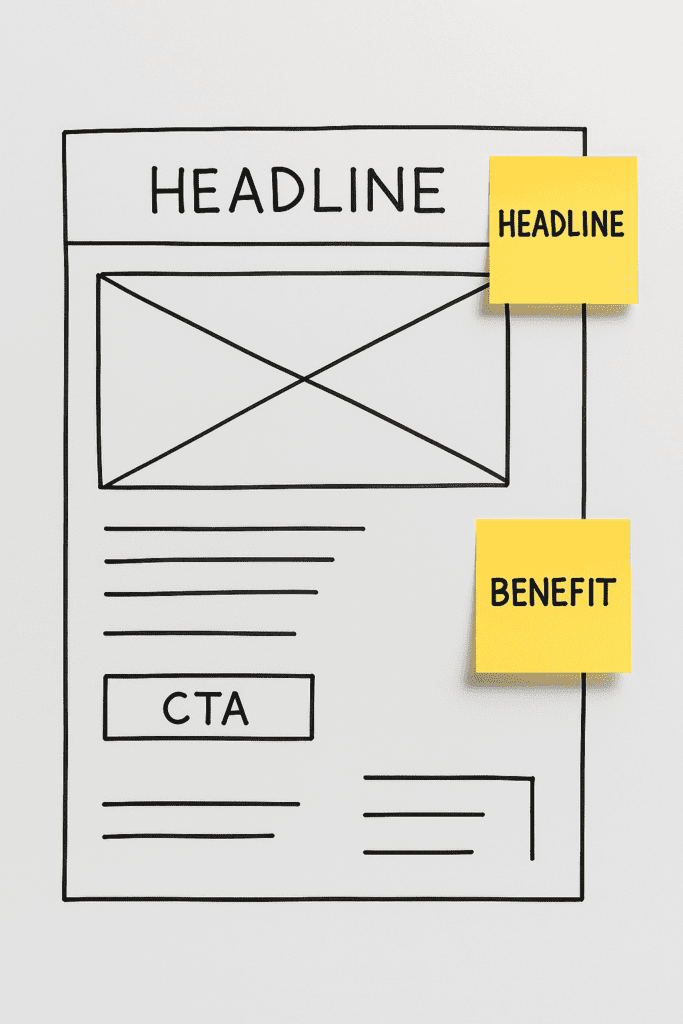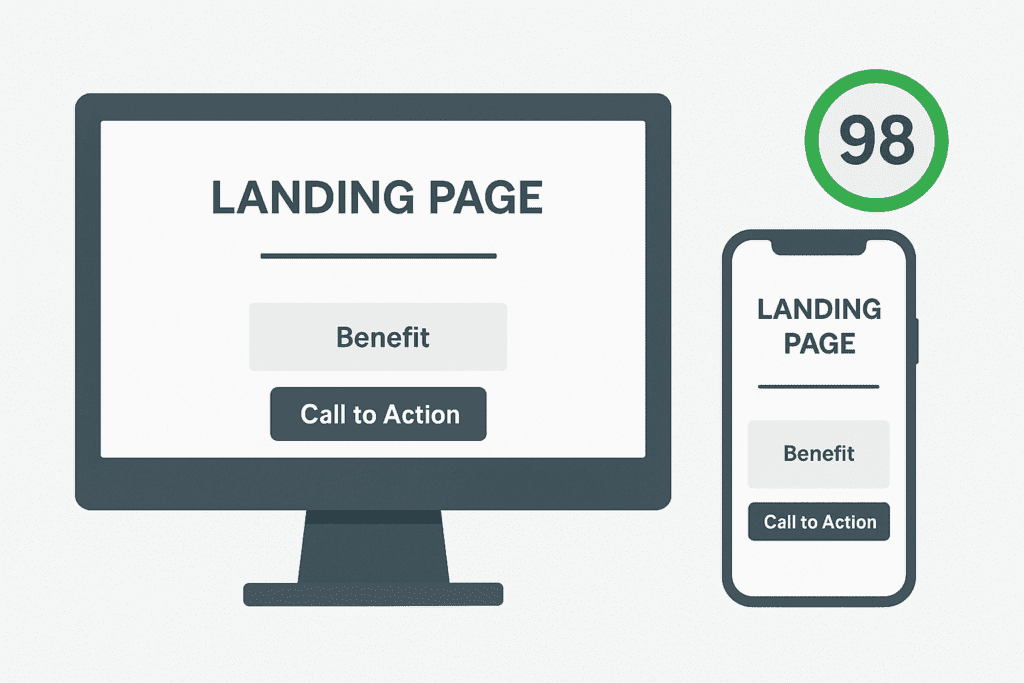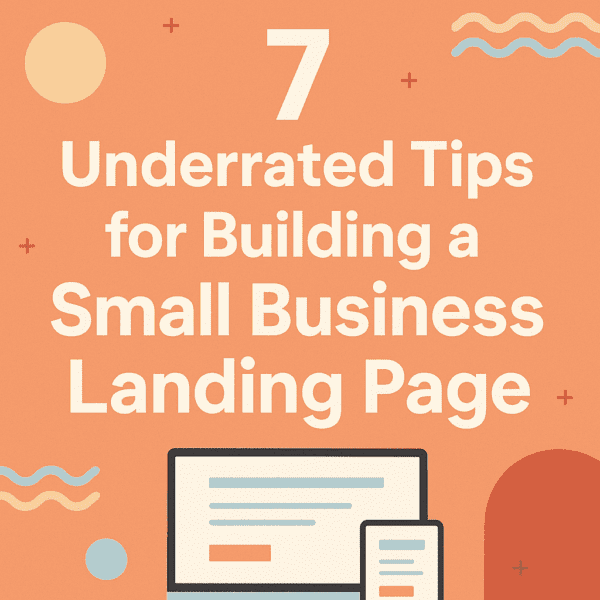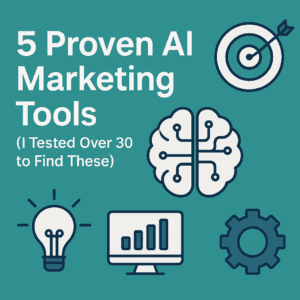Building a landing page for your small business seems simple—until you’re staring at ten tabs, comparing WordPress, Wix, Webflow, and five AI tools that promise to “do it for you.”
The truth? There’s no one-size-fits-all. And most advice skips the scrappy, in-between stage many founders are in.
When I launched my first service, I spent hours fiddling with colors instead of focusing on what actually mattered: clarity, speed, and conversions.
So in this post, I’m sharing the tips no one talks about. The kind that real founders shared in Reddit threads, not agency portfolios.
Ready to build something that works—not just looks good?
Let’s dig into what actually makes a landing page useful (and what just burns your time).
Table of Contents
7 Smart Tips for Building a Small Business Landing Page
Some of the best-performing ones are dead simple. Others are hand-coded, SEO-packed machines.
However, most people aren’t talking about these 7 major tips for building the perfect landing page for your small business.
1. Start Simple. No, Really Simple.
You don’t need a flashy landing page.
You need a clear message.
Too many small business owners (myself included) waste hours debating fonts, layouts, or whether the hero image should have a fade-in animation.
But what actually matters?
- A headline that says what you do.
- A subheadline that says who it’s for.
- A button that tells people what to do next.

One Redditor said it best: “If your landing page is just to say ‘I’m a lawyer with 10 years of experience,’ just use a template.” And they’re right.
Templates exist for a reason—because they work. So don’t overthink it on day one.
2. Know When to DIY vs. Hire Help
There’s a difference between launching something… and launching something that performs.
A few Reddit founders broke it down perfectly:
- If you’re broke and just starting: buy a $20 template and slap it on Wix, Carrd, or WordPress.
- If you’ve got $1,000: hire someone on Fiverr or Upwork to build it on Webflow.
- If you’ve validated your idea and are ready to run paid ads: budget $4k–$6k for a custom build.
I tried to do it all myself at first. Got overwhelmed. Ended up spending weeks watching Elementor tutorials instead of doing what mattered—getting leads.
Eventually, I hired someone to polish it. Best decision I made.
3. Speed > Fancy Features

People leave slow sites. Period.
One founder shared how their AI-built page looked slick… but it was bloated and slow. Another mentioned getting zero leads from a Divi-based site that looked “pretty”—but didn’t load fast or rank on Google.
Here’s the truth:
- A clean, fast-loading site will outperform a fancy one every time.
- Nobody cares about animations if they bounce before the page loads.
Keep it light. Use fewer fonts. Optimize your images. And don’t stack 12 plugins just because they’re “cool.”
4. SEO Isn’t Optional. It’s the Foundation.
This one hit me hard.
A Redditor shared that 96% of pages online get zero traffic from Google. That’s wild.
They also said they spent thousands on a nice-looking landing page—only to realize it had no SEO. No meta tags. No indexing strategy. No traffic.
So now, every time I build a new page, I check:
- Is my target keyword (like “small business bookkeeping”) in the headline?
- Do I have a clear page title and meta description?
- Are images compressed and tagged?
- Is the copy clear and human-readable?
You don’t have to be an expert. But you do need the basics in place.
5. AI Tools Are Cool… But Not Magic
There’s a lot of hype around AI website builders.
Some Redditors used Lovable, Deepsite, even ChatGPT + Gemini combos to build full pages. And some of those tools actually did a decent job.
But here’s the thing:
AI can help with the first draft. It can even speed up layout ideas.
But you still need to guide it.
Tell it:
- Who you are
- What the site is for
- Who it’s targeting
- The tone or “vibe” you’re going for
And always go back and edit. AI’s good at structure—but it won’t know your audience like you do.
6. Don’t Let Tech Decisions Kill Your Momentum
Here’s an honest confession: I lost a month debating between WordPress and Webflow.
And for what?
The truth is, almost every platform today can:
- Host your landing page
- Connect your form to email
- Track visits with basic analytics
One founder said it perfectly: “A real founder is focused on getting clients. Not becoming a web designer to save a few bucks.”
Pick a stack that’s good enough for now. You can always upgrade later.
Momentum > perfection.
7. Most Sites Are Just Fancy Business Cards (And That’s Fine)
I loved this comment: “As is, my site is just a glorified business card. I get my leads elsewhere.”
That made me feel so much better.
Not every landing page needs to convert at 20%. Some are just there so your name shows up in search. Or so someone you DMed can Google you and find something legit.
And that’s okay.
A few more real use cases from Reddit:
- A dev used Carrd and MailerLite for a 2-day launch.
- Another built their identity consultancy site using Huggingface + Gemini prompts.
- Some just went with Jabburr or Shopify for easy setup.
All of them worked—for their goals.
So define your goal, then build accordingly.
Final Thoughts: Build What You Need, Not What You’re Told
A good landing page isn’t about bells and whistles—it’s about getting the job done. Fast load, clear message, and just enough to move someone to take the next step.
Protip: Don’t let perfection delay progress. Launch the simple version now. Improve as you learn what your visitors actually do.
We covered a lot:
- Start with clarity, not code
- Use templates if you’re early
- Speed and SEO matter more than animations
- AI is a tool, not a shortcut
- Focus your energy on getting clients, not pixel tweaking
Whether you’re bootstrapping or ready to hire help, these underrated tips can save you hours (and sanity).
👀 Drop a comment below—what part of this post hit home for you and your small business journey?
If you own a B2B business, then you would really love this surprisingly great tips for lead generation.



